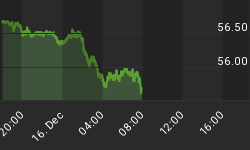The U.S. Dollar mounted a strong recovery late in the trading session as equity markets weakened into the close for the second day in a row. Trading has been lackluster for the past few days in the Forex markets highlighted by choppy, two-sided trading on light volume.
Today the Dollar started out lower but quickly regained a little strength in mixed trading following the release of two better than expected U.S. economic reports. Early this morning it was reported that the S&P/Case-Shiller Housing Report showed unexpected growth while consumer confidence rose. Both of these reports helped the Dollar rebound after early session weakness in a trend that continued throughout the day into the close.
The EUR USD could not hold on to gains following a firm early morning session. Another report showing an improvement in Euro Zone growth helped give this market an early boost, but the gains were erased throughout the day by the bullish U.S. economic reports. A sell-off in the equity markets late in the session finally pushed the Euro lower on the day. Technically, this market remains in a range of 1.4447 to 1.4045 with the market basically hugging 50% of this range.
Sell pressure continued to mount against the GBP USD. This currency pair has been in a downtrend since August 6th following the announcement by the Bank of England to expand its asset-buyback program. The sizeable government debt is also an issue pressuring this market. Concerns are growing about the government's ability to pay-off its debt. The charts indicate plenty of room to the downside.
Weakness in the Asian equity markets could be the catalyst driving the Japanese Yen higher. There is talk that Asian investors may be unwinding carry trade positions. The weak close in the U.S. equity markets today did not help matters as nervous Japanese traders may be pulling money out of the markets in anticipation of a sizeable break.
The USD CAD is closed higher after trading better most of the trading session. Lower oil prices caused traders to lighten up long positions in the Canadian Dollar after a four-day rally. A shift out of higher risk assets may lead to another break in the Canadian Dollar over the short-run.
The weak close in U.S. equity markets led to weakness in the higher yielding AUD USD and NZD USD. This could be a sign that appetite for risk is beginning to wane. Despite new highs in the U.S. stock market over the past week, the Aussie and Kiwi have not followed these markets higher. This divergence could be an indication of a major top formation. Furthermore, weakness in China is beginning to weigh on these two markets.
















